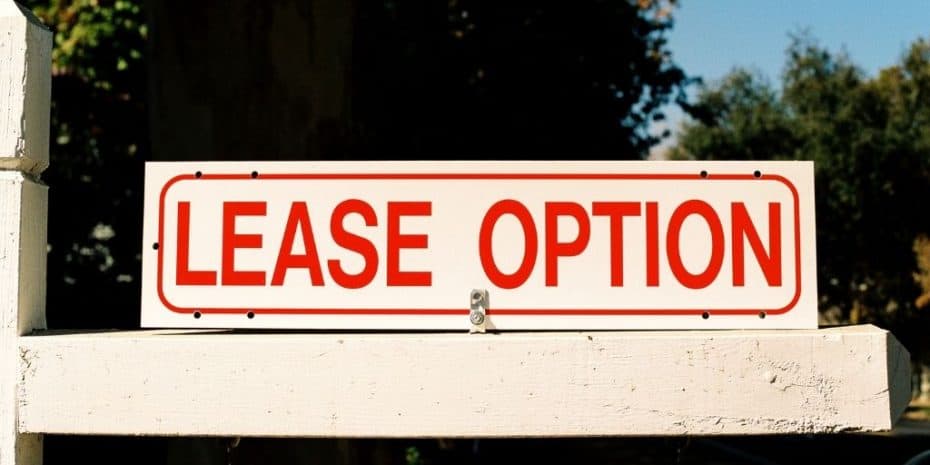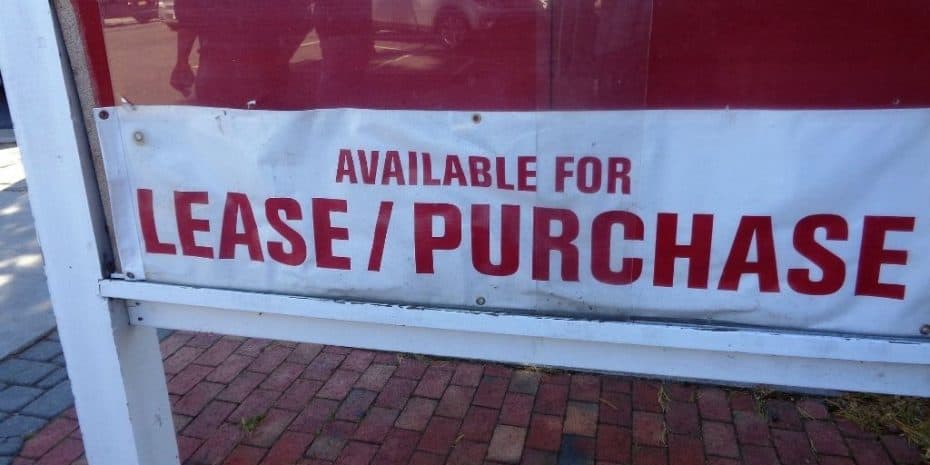What Is Rent-to-Own?
REtipster does not provide legal advice. The information in this article can be impacted by many unique variables. Always consult with a qualified legal professional before taking action.
How Rent-to-Own Works
Rent-to-own agreements have two parts:
- A Rental Agreement
- A Purchase Agreement (or Option to Purchase)
These two agreements can be set up as two separate documents or combined into one.
The term “Rent-to-Own” is often used interchangeably with a Lease Option and a Lease Purchase.
A Lease Option and Lease Purchase have many similarities and a few important differences.
Lease Option vs. Lease Purchase
Here are the most notable similarities between a Lease Option and Lease Purchase:
- Leases in rent-to-own situations are typically between one and five years.
- Tenants can potentially negotiate to have some or all of their upfront consideration and/or rental payments applied to the purchase price.
- The agreements can be set up as two separate agreements or combined into one.
- Many tenant-buyers and landlord-sellers who enter into this type of agreement have similar reasons for doing so (see below).
However, as the names imply, the differences come into play with the word “Option” and “Purchase.”
With a Lease Option, the tenant can exercise their option to buy the property at a pre-determined price at or before the expiration of the lease term. However, the tenant is not making a commitment to purchase the property. If at the end of the lease term, the tenant is still not in a position to purchase the property or no longer wishes to buy the home, they can simply walk away from the deal. In doing so, they will also forfeit any upfront consideration and equity they have paid toward the purchase price to date.
Rocket Lawyer: Make Your Lease With Option to Purchase
With a Lease Purchase, the tenant is expected to buy the property at the end of the rental agreement. But instead of closing the transaction within 30 days, the closing will occur several months or years later, with the tenant-buyer renting the property up until the closing date. If the tenant-buyer does not buy the property, they will most likely lose their earnest deposit, any upfront consideration, or rent credit they have paid toward the purchase of the property.
Similar to a normal purchase agreement, if a buyer is not able to obtain financing for a property, they are typically able to back out of the agreement without any financial consequences (again, depending on how the original agreement is written). However, if the tenant simply chooses not to buy (e.g., if they have a change of plans or a change of heart), there may be legal ramifications to deal with (i.e., the seller can sue for failure to perform and/or the seller can keep the earnest deposit, etc.).
How a Lease Option Works
There are many different ways a Lease Option can be negotiated and written on behalf of both parties. However, some common rules of thumb are commonly seen in this type of arrangement.
In a lease-option, there is typically an upfront, nonrefundable option fee or “consideration” paid by the tenant-buyer, between 2% and 7% of the price of the home or the equivalent of 3 to 6 months of rent payments.
In many lease-option agreements, the rent price will be above-market (typically 25% higher than comparable rentals in the area), but a portion of the rent payment may also be allocated toward the tenant-buyer’s down payment if they choose to buy the home.
In a lease-option agreement, the landlord-seller continues to pay for all the holding costs of the property (property insurance and property taxes, etc.). In some cases, the tenant-buyer can agree to pay for repairs, maintenance, and utilities or simply pay a higher rent amount to offset these costs for the benefit of the landlord.
In most lease-option arrangements, if the tenant-buyer does not buy the home at the end of the lease period, they will lose their option consideration and any money they would have saved on the down payment. This depends on the specifics of how the lease-option agreement is written, however, which underscores the importance of both the tenant-buyer and landlord-seller having their respective attorneys prepare or review the agreement before signing. This gives both parties full awareness of the terms and consequences detailed in the agreement.
How a Lease Purchase Works
There is a similar rent-to-own arrangement called a “lease purchase,” which is similar to a lease-option. The major difference is that a lease-purchase requires both parties to close on the sale, whereas in a lease-option deal, the tenant-buyer simply has the option to complete the transaction and the seller does not.
Many of the same attributes apply to a lease-purchase agreement, such as:
- 1- to 3-year rental agreement.
- Upfront option fee paid by the tenant-buyer.
- Above-market rent, with a portion going toward the eventual purchase price.
- Tenant-buyer pays for utilities, repairs, and maintenance.
One easy way to think of a lease-purchase is like a three-year closing deadline, with the buyer renting the property prior to the closing date. The tenant is essentially committing to buy the property at the end of the lease period. If they do not, they will most likely lose their earnest deposit and any money they’ve put toward the purchase of the property. The landlord-seller could also have grounds to sue the tenant-buyer for failure to perform (again, depending on the expectations laid out in the original lease-purchase agreement).
It is also worth noting that the grounds for a tenant-buyer losing their option consideration or earnest deposit essentially boils down to what is written in the original agreement. For instance, in most purchase agreements, a buyer will not lose their earnest deposit if they are unable to obtain financing approval. However, if they choose not to close simply because they have had a change of heart, then they would lose their earnest deposit.
In any case, it underscores the importance of seeking legal counsel and thoroughly understanding what is written in the lease-purchase agreement, so there are no unwanted surprises for either party in the end.
How to Find Rent-to-Own Homes
Buyers can try the following strategies to find a rent-to-own property in their target neighborhood.
1. Ask Everyone (They Know)
It sounds obvious, but few people ever take full advantage of their existing networks.
Ask everyone to see if they know anyone looking to sell or rent their home, and they might be open to a rent-to-own arrangement. That includes friends, family, colleagues, neighbors, and even the barista with the scary tattoos at a local coffee shop.
Most will put them in touch with an aunt’s sister-in-law’s cousin once removed, who’s sick of being a landlord and wouldn’t mind selling to a nice family. Interested individuals can negotiate terms and see if it’s a good fit.
Alternatively, one can cast a wider net by going online. Post in local Facebook groups, or local networks like Nextdoor.com. Do not discount Craigslist—it is an oldie-but-goodie. Just make sure to verify that the person claiming to be the owner actually owns the property—online scams abound in that space.
2. Reach Out to Tired Landlords
Most people do not realize how miserable landlording can be. From 3 am phone calls to cavalier tenants constantly saying “Check’s in the mail!” to endless repairs and maintenance, many landlords reach a point where the juice just isn’t worth the squeeze anymore.
Tenant-buyers may want to find these landlords because they are open to any excuse to get out hassle-free.
Landlords tend to be the most exasperated during and after evictions. Evicting tenants is expensive and time-consuming for landlords, often making them question why they are messing around with rental properties at all. Ask around the neighborhood about evictions, and try reaching out to the property owners.
Eviction cases in local courts are also a good source of landlord names, as these cases are public record.
And, of course, one can simply ask about vacant units. It makes for a quick phone call or email: “Are you open to a rent-to-own arrangement? I’d like to buy my next house, but I’m not quite ready yet.”
3. Follow Up on Dusty Property Listings
Similar logic applies to sellers who have listed their homes for months on end with no bites. However, they may be open to alternative arrangements if it means movement on their property.
Search listings that have sat on the market for four, five, six months, or longer. Some sellers are stubborn, but others are inevitably getting desperate. Buyers can just explain that they would like to buy a seller’s property but are not quite ready financially, then ask if they are open to signing a lease-purchase agreement.
It also helps to have a real estate agent who can help filter listings, feel out sellers, and structure contracts.
4. Talk to Local Realtors
Realtors may provide direct access to the MLS. But many often have huge local networks beyond their experience negotiating deals and putting together legal contracts.
Real estate agents operating in a buyer’s target neighborhood for years often know people to approach rent-to-own agreements or owners who would at least consider them. With a few phone calls, a Realtor might find several receptive landlord-sellers.
Local brokerages may also participate in rent-to-own programs. For example, some Realtors actively work with programs like Home Partners of America to help place renter-buyers with landlord-sellers.
5. Research Rent-to-Own Companies
Home Partners of America is not the only company that enters rent-to-own agreements directly with would-be homebuyers.
Companies such as Divvy, ZeroDown, and Landis are real estate startups that buy homes and then ask buyers to sign a rent-option agreement with them. They earn a small profit a house is bought. Buyers also get the extra time they need to improve their credit or save up a down payment while still moving into their dream home.
Understanding their fee structure and requirements before signing on the dotted line is a must, however. It falls on the buyer to double-check what happens if they fail to purchase within the specified time frame.
6. Check Rent-to-Own Listing Platforms
Other companies operate peer-to-peer listing platforms, where landlords can list properties for rent-to-own and tenant-buyers to browse them.
A few examples include Rent-to-Own Labs, Hidden Listings, and HomeFinder. Note that some of these listing platforms cost money, unlike most traditional rental listing platforms. Check if they offer free trials, so you know what you’re getting before charging your card.
Pros and Cons of Rent-to-Own
Like every other strategy to buy a home, rent-to-own has its share of upsides and drawbacks.
Some of the advantages of rent-to-own include the following:
- Move In Today: Instead of waiting to move into a long-term home, a tenant-buyer can move in immediately. They get to know the house and neighborhood before buying and not have to worry about low housing inventory posing a problem when it comes time to buy.
- Automated Down Payment Savings: As part of the contract, a portion of each rent payment usually goes toward the down payment.
- Locked Purchase Price: In most cases, a lease-option or lease-purchase agreement can be signed with a specified price, eliminating the worry about rising home prices between now and the actual purchase.
- Build Your Credit: Many landlords and rent-to-own service companies offer to report rent payments to the credit bureaus to help buyers build credit while they prepare to buy. Rent payments aside, rent-to-own also affords time to work out other wrinkles in one’s credit history.
Of course, if rent-to-own were all rainbows and butterflies, everyone would do it. Watch out for the following downsides and risks in rent-to-own arrangements:
- Potentially Higher Monthly Cost: Typically, rent-to-own charges higher rent than market rates because a portion of it gets set aside for down payment.
- Risk of Lost Savings: Buyers might lose some of upfront deposit or monthly allotment toward buying when they decide not to buy. There is no guarantee that every penny earmarked for down payment gets returned.
- Possible Maintenance Costs: In some cases, renter-buyers are responsible for maintenance and repairs even before they purchase.
- Risk of Declining Home Values: Even though rent-to-own buyers are not a homeowner yet, they still take on some risk of housing market declines. For example, if the house drops in value, they are still obligated to buy it at the contracted price. And even if they still want to buy it above that market value, mortgage lenders base buyers’ LTV on the appraised value if it is lower than the sales price.
- Unscrupulous Landlords: There are documented cases of landlords who have taken advantage of their tenant-buyers because they can charge above-market rent and keep the upfront option consideration. Some landlords might even look for any feasible reason to evict their tenant-buyer before the landlord is obligated to sell the property. Why? Because if they can regain control of their property, they can find another tenant-buyer who will also pay above-market rent and an upfront consideration. Therefore, any tenant-buyer must be aware of their rights and perform in accordance with the rent-to-own agreement to avoid any potential loss in a rent-to-own arrangement.
- Low Success Rate: Statistically, many rent-to-own agreements do not result in the tenant buying the property. If a tenant-buyer pursues a rent-to-own agreement because of their low credit score or insufficient income, there is a good chance their situation will not actually improve to the point of getting mortgage approval during the one-to-five-year term (even if they think it will). In other cases, there can be changes in the tenant’s employment or other common reasons for a tenant to move. For many potential reasons, it is not uncommon for tenant-buyers to walk away from the property before purchasing it.
Why Would a Tenant-Buyer Use a Rent-to-Own Agreement?
There are a few reasons why a tenant-buyer might consider entering into a rent-to-own agreement with a landlord-seller.
- Advantage #1: If a buyer cannot qualify for financing today due to a poor credit score or insufficient income, but they think they will quality before the rental period is over, a rent-to-own agreement will give them the option to purchase the property after they had a chance to improve their credit and income.
- Advantage #2: A lease-option allows the tenant-buyer to get very familiar with the property and its surrounding neighborhood before they make a much larger financial decision to buy the property (note: a lease-option allows the buyer much more flexibility in terms of if/when they will make this purchasing decision, whereas a lease-purchase requires that the tenant-buyer close on the deal).
- Advantage #3: In a rent-to-own scenario, the tenant-buyer is able to get familiar with the property without owning it. Since the tenant is not the owner on title, they can avoid some of the additional burdens and expenses that come along with property ownership (i.e., hazard insurance and liability insurance, property taxes, etc.).
- Advantage #4: Depending on how the rent-to-own agreement is written, some or all of the tenant-buyer’s upfront option fee and rent payments may be allocated toward the down payment or eventual purchase price of the property. This effectively allows the tenant to build equity in the property during the term of their lease, as a sort of “forced savings” mechanism.
There are also some disadvantages for a tenant-buyer in a rent-to-own arrangement:
- Disadvantage #1: In many rent-to-own arrangements, the tenant is required to pay money upfront for the right to purchase the property and an above-market rent amount each month during the term of the lease. Unless they can negotiate otherwise, they will have to put more money on the line than they would in a normal rental agreement (i.e., one that does not give them the option to purchase). If the tenant chooses not to purchase the property in the end, they will often end up losing more money than if they had simply signed a normal rental agreement without the option to purchase.
- Disadvantage #2: If the value of the property goes down after the tenant signs the initial lease-option or lease-purchase agreement, they will be stuck with an above-market purchase price, unless, for instance, the original rent-to-own agreement gives them to right to revise the purchase price based on an updated appraisal.
While there is certainly a time and place for a tenant to seriously consider a rent-to-own agreement, it also sets up certain limitations and restrictions for both parties that may not be optimal in the end.
Why Would a Landlord-Seller Use a Rent-to-Own Agreement?
There are also a few reasons why a landlord-seller might consider entering into a rent-to-own agreement:
- Advantage #1: In many rent-to-own scenarios, the landlord is able to collect an above-market rent amount for the duration of the rental agreement. While a portion of this monthly rent amount may also be applied to the eventual purchase price, it can increase the landlord’s cash flow up until the property is sold to the tenant-buyer.
- Advantage #2: Most tenants in a rent-to-own situation tend to take better care of the property during their occupancy because they have the mentality of an owner, rather than a tenant. This bodes well for the landlord, and there is a lower likelihood that the tenant will inflict the same level of wear and tear on the property.
- Advantage #3: While the standards for rent-to-own contracts can vary by state, in many cases, the contract may be negotiated so that the tenant-buyer is responsible for paying the cost of utilities, maintenance, and upkeep, which further improves the landlord-seller’s cash flow and greatly reduces the property management burden.
- Advantage #4: If the tenant does not follow through with purchasing the property, the landlord is able to keep the upfront option consideration and rent payments they collected from the tenant along the way.
Of course, there are some drawbacks for the landlord-seller as well:
- Disadvantage #1: If the value of the property rises substantially during the term of the lease, the landlord-seller is still obligated to sell the property at the pre-determined price in accordance with the original agreement.
- Disadvantage #2: If another buyer comes along during the lease term and offers to buy the property sooner and/or at a higher price, the landlord-seller is obligated to comply with the original rent-to-own agreement.
In most cases, if the landlord’s intent is to simply liquidate their property, it is in their best interests to make the contract shorter (6 to 12 months), and if the landlord’s intent is to collect more money and cash flow from the property, it may be more beneficial for them to make the contract longer (3 to 5 years).
Is Rent-to-Own Right for You?
Rent-to-own homes are a good solution for some people, but it involves certain complexities that are not present in either a standard purchase agreement or a standard lease agreement.
When considering a rent-to-own agreement as either a landlord-seller or a tenant-buyer, seek legal counsel. Either way, make sure the rent-to-own agreement is written in a way that makes sense, and get educated about any potential consequences of failure to perform.
It is also helpful to realize that rent-to-own agreements can have significant variations. Most aspects of a rent-to-own agreement are negotiable, so tenant-buyers are advised to be their own advocate and make sure the terms work to their benefit in the end.
Reviewed by Claude Diamond, J.D.












